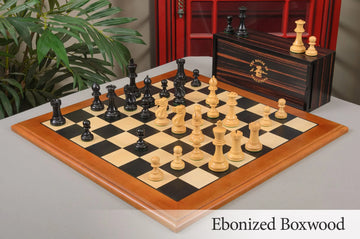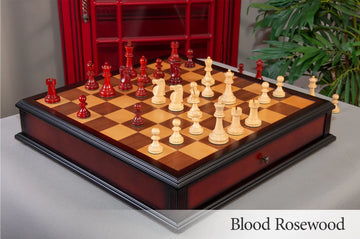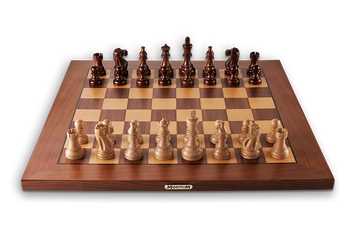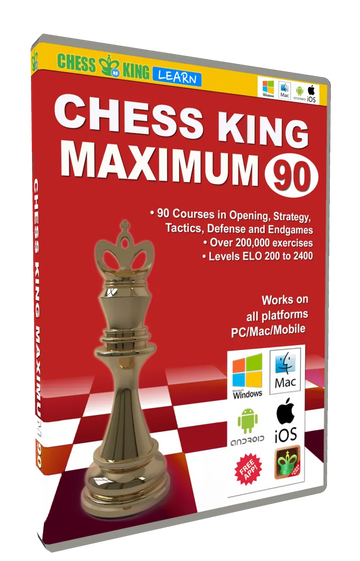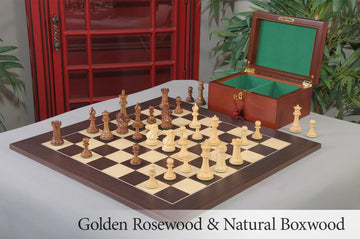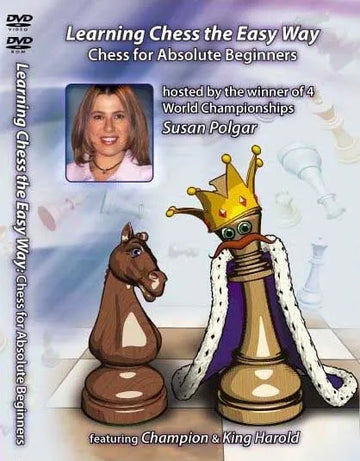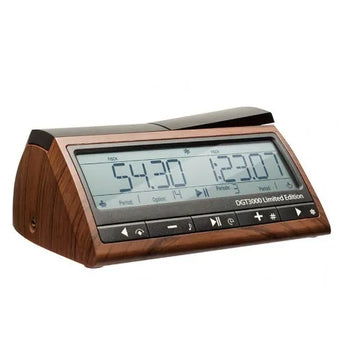The Chess 50-Move Rule: Everything You Need to Know
Chess is full of rules, some obvious and others that sneak up on you. The 50-move rule is one of those rules people hear about but don’t always understand. It’s not complicated, but it can decide games in ways you might not expect. Knowing how it works can save you from missing a draw, or walking into one.

What the 50-Move Rule Actually Says
The rule states that a player can claim a draw if neither side has moved a pawn or captured a piece within the last 50 consecutive moves. That’s 50 moves per player, so 100 total. If nothing changes the material on the board, meaning no captures and no pawn moves, you can stop the game.
The purpose is simple. If progress isn't happening, the game doesn’t need to keep playing on indefinitely. You don’t have to sit there pushing pieces around with no real result. The game can end, and both players can move on.
Why This Rule Exists in the First Place
Before rules were as standardized as they are now, games could last forever. Some players refused to resign, even in hopeless situations, just to wear out their opponent. At other times, people played on, hoping for a mistake that might never come. Without a rule like this, chess matches could have turned into an endless pushing of pieces with no real conclusion.
By setting a limit on moves, the game forces players to prove they can win before they run out of time. If you have a winning position but can’t checkmate within 50 moves, you probably weren’t going to win anyway.
How the Rule Has Changed Over Time
This rule hasn’t always been set in stone. Early chess didn’t have it at all, which led to problems with long, pointless games. When it was introduced, people thought 50 moves would be enough to force a checkmate in any reasonable situation.
That assumption wasn’t quite right. Over time, players and computers discovered that some checkmates needed more than 50 moves without a pawn move or capture. Rook and bishop against a lone king is a good example. There are positions where the win is guaranteed but takes more than 50 moves.
Because of that, chess organizations tried exceptions. At one point, certain positions were allowed more than 50 moves to force a win. But this made things complicated. Eventually, in 1992, FIDE removed those exceptions and returned to the straight 50-move rule for everything. No more exceptions, no more special cases.
When and How to Claim a Draw Under the Rule
This rule doesn’t work on autopilot. If you want the game to end, a player can claim the draw. The arbiter won’t step in unless you say something.
In over-the-board chess, claiming a draw means stopping the clock and telling the arbiter. You have to write down the moves that prove no captures or pawn moves have happened for 50 turns. If you're right, the game ends. If not, you keep playing.

Online chess is different. Many platforms apply the rule automatically. If neither player has done anything to reset the count, the game is declared a draw once the move limit is reached. There’s no need to claim anything, the system does it for you.
One exception exists. In tournaments, an arbiter can declare a game drawn if no captures or pawn moves happen in 75 moves, even if no player has claimed the draw. This prevents games from dragging on because someone forgot to speak up.
How the Rule Affects Different Endgames
This rule comes into play most often in endgames. If you have an overwhelming material advantage but don’t checkmate in time, the game ends in a draw. That can be frustrating, but it’s also fair. The rule stops players from stretching out games that aren't going anywhere.
Some endgames get affected more than others:
- King and queen vs. king – This one is easy. You should be able to checkmate in well under 50 moves.
- King, rook, and bishop vs. king – Some positions require perfect play to force checkmate within 50 moves. If you don’t know what you’re doing, you can run out of time.
- King and two knights vs. king and pawn – This one is tricky. Sometimes the extra pawn helps force a checkmate, but if it doesn’t move, the rule can still come into play.
- King and rook vs. king and knight – If the defending king knows what they’re doing, this often turns into a draw because the win takes too long.
Grandmaster Strategies to Avoid a 50-Move Draw
Players who understand this rule use it to their advantage. If you have a winning position but don’t checkmate in time, you’ve wasted your effort.
To avoid that, strong players:
- Track the move count. If you're getting close to 50, you need a plan.
- Force a capture or a pawn move. Either one resets the count.
- Know their endgames. If you don’t have time to checkmate, you might be playing the wrong way.
On the other side, if you're defending, you can use the rule as a lifeline. If you can hold on for 50 moves without losing material or position, you can claim a draw and escape.
Famous Games Where the Rule Played a Big Role
This rule has decided some high-level games. Grandmasters have used it to save positions they should have lost, or missed their chance to claim a draw.
One famous example happened in a game between David Bronstein and Bobby Fischer. Bronstein had a lost position, but he knew the rules of chess well. He defended just long enough for 50 consecutive moves to pass. Instead of losing, he declared a draw by the rule and walked away with half a point.
Another case involved a correspondence game where a player reached a known tablebase win. The problem? The 50-move rule overruled the tablebase, and the game ended in a draw. This kind of situation happens when computer analysis and the set of rules don’t always align.
How This Rule Works in Correspondence Chess
Correspondence chess (chess by mail, email, or slow online play) has its own way of handling the rule. Normally, the 50-move limit applies as usual. But once there are seven pieces or fewer on the board, players can use endgame tablebases. These tablebases tell you if a position is a win or a draw based on perfect play. If the tablebase says a win exists, the game ends that way, even if it takes more than 50 moves.
This makes sense because tablebases remove all doubt. Instead of making players count moves, the system applies an objective answer. But in normal tournament play, you’re stuck with the standard 50-move limit.
Why This Rule Matters More Than People Think
Some players assume this rule never comes up, but that’s not true. It affects real games at every level, from club players to world championship matches. Knowing how to use it can save you points over the course of a tournament.
It also keeps chess fair. If no progress is being made, there’s no reason for a game to drag on forever. The rule keeps things clear, avoids unnecessary delays, and forces players to finish their wins efficiently.

It’s not the most exciting rule in chess, but it’s one of the most practical. When a game is going nowhere, the rule gives both players a clean way to end things and move on to the next challenge.
Final thoughts
Grasping the 50-move rule goes beyond mere rule knowledge; it encompasses mastering their application. The difference between a tie and a game lost is this rule, and it applies whether you're defending a lost position or trying to win.
Having a good chess board is important if you want to improve your game. You can concentrate on your game and plan your movements more efficiently with a high-quality chess set. Crafted with the attention to detail that serious players need, House of Staunton delivers sets that are tournament ready. Their boards make the game more immersive, whether you're practicing for a tournament or just adding to your collection.
Improving your chess game has never been easier than with House of Staunton.

